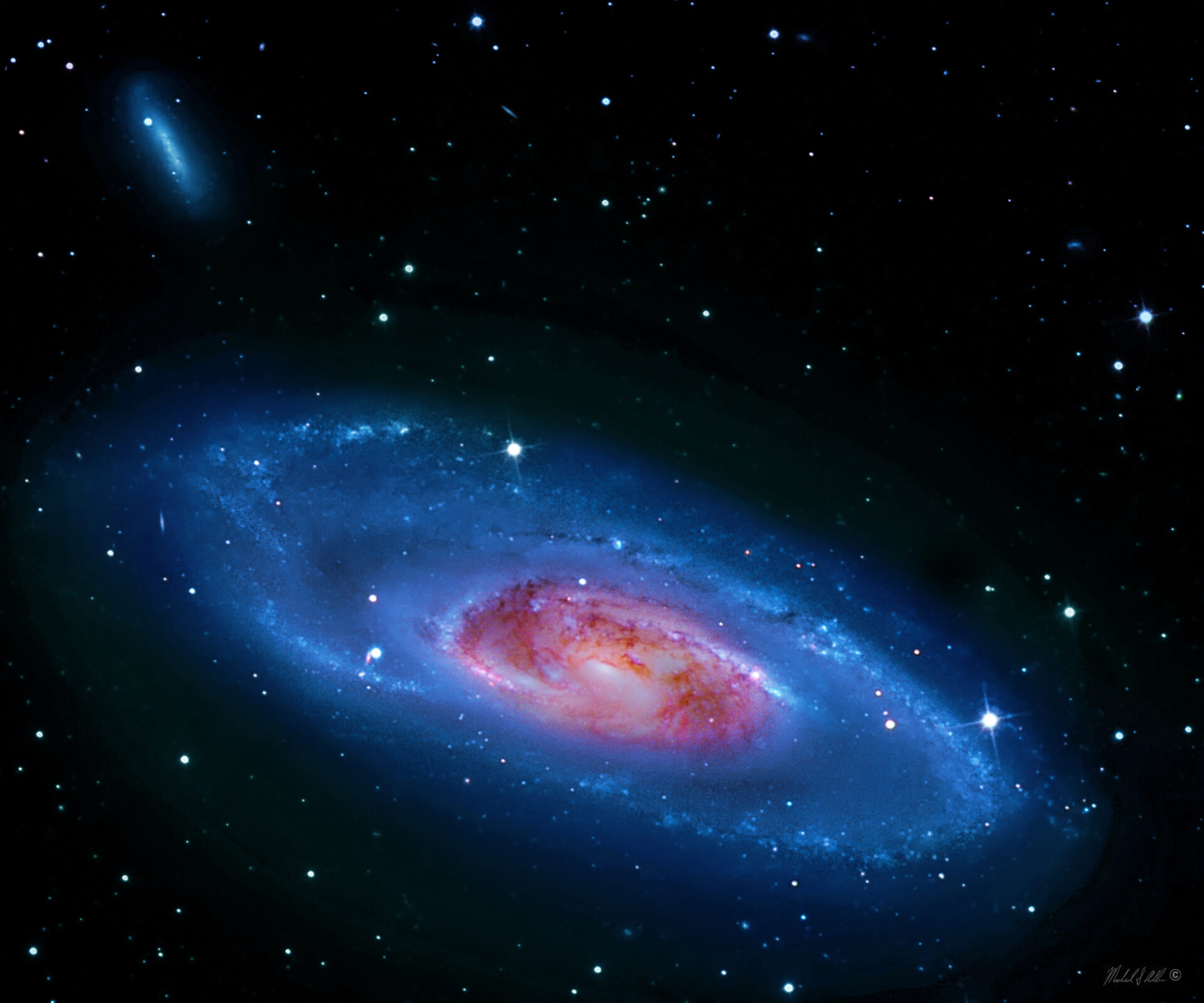Optics: 20″ Planewave CDK20
Mount: Software Bisque Paramount MEII
Camera: FLI PL16803
Filters: FLI LRGB
Dates/Times: April, 2017
Location: Adler Earth and Sky Observatory, Jackson Hole WY
Exposure Details: L=25x10min,1:1, R,G,B=38x10min, 2:2, total 63 images, 23 hr
Acquisition: MaxImDl, SkyX, Guiding Astrodon MOAG, SBIG STi
Processing: MaximDl, Photoshop CC
Messier 106
Original price was: $65.00.$52.50Current price is: $52.50.
Messier 106, Close to the Great Bear (Ursa Major) and surrounded by the stars of the Hunting Dogs (Canes Venatici), this celestial wonder was discovered in 1781 by the French astronomer Pierre Mechain. Later, it was added to the catalog of his friend and colleague Charles Messier as M106. Modern deep telescopic views reveal it to be an island universe — a spiral galaxy around 30 thousand light-years across located only about 21 million light-years beyond the stars of the Milky Way. Along with a bright central core, this image highlights youthful blue star clusters and reddish stellar nurseries tracing the galaxies spiral arms. It also shows off remarkable reddish jets of glowing hydrogen gas. In addition to small companion galaxy NGC 4248 (bottom right) background galaxies can be found scattered throughout the frame. M106 (aka N GC 4258) is a nearby example of the Seyfert class of active galaxies, seen across the spectrum from radio to x-rays. Active galaxies are believed to be powered by matter falling into a massive central black hole.This image was taken through the 20″ Planewave CDK20 telescope and the Finger Lakes Instruments PL16803 camera and is a combination of 63 images taken over 23 hours.


